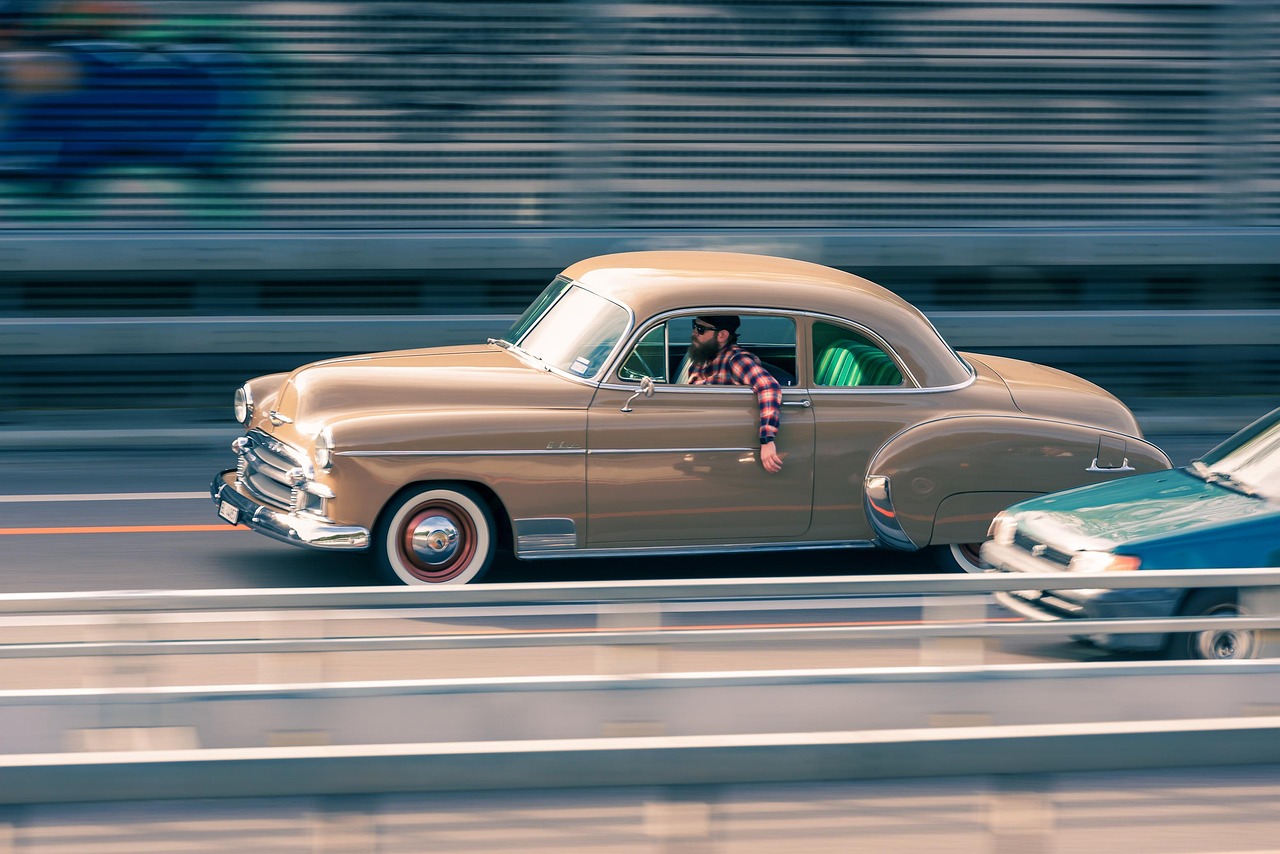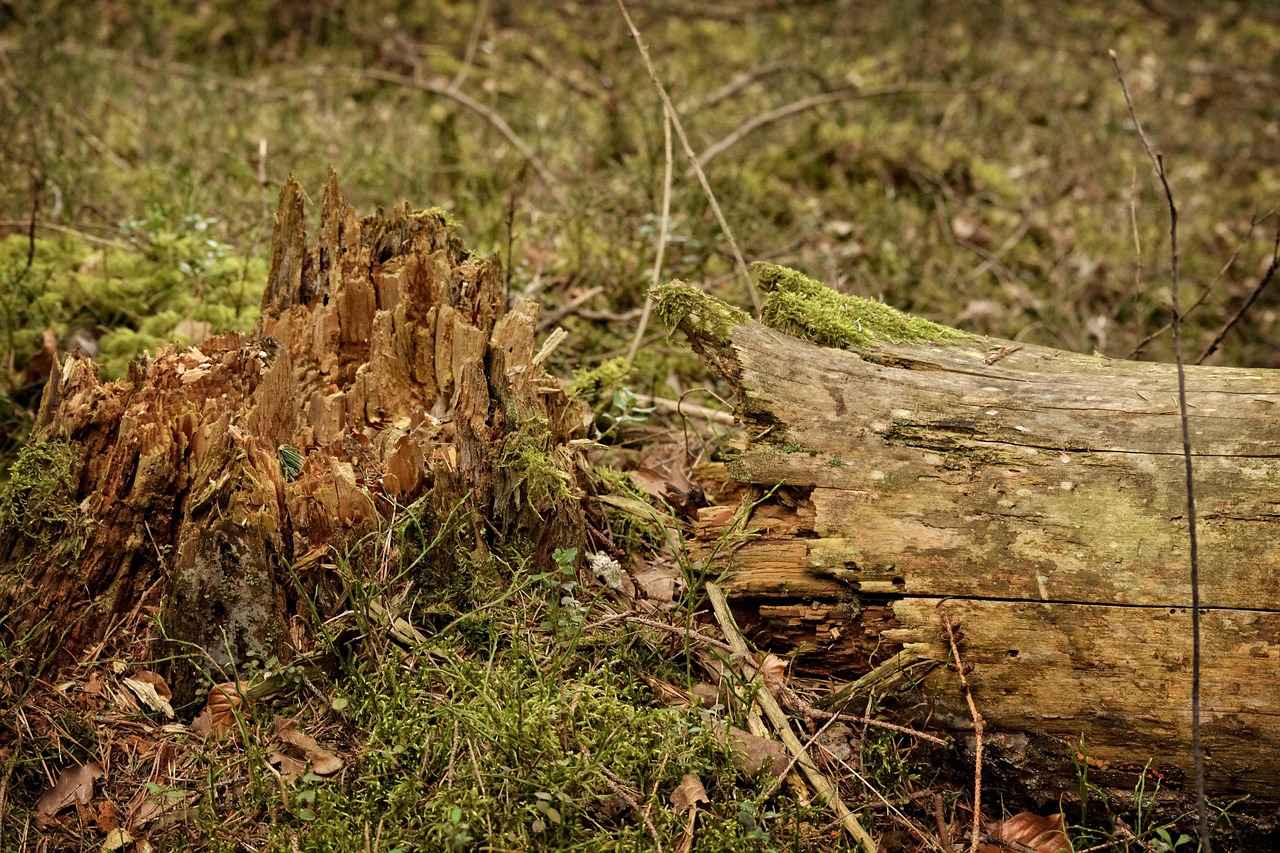When it comes to maintaining the aesthetic appeal of your vehicle, one of the most noticeable aspects is the condition of the car hood. Painting a car hood can significantly enhance its appearance, but many car owners wonder, how much does it really cost to paint a car hood? This article serves as a comprehensive guide to the costs involved, factors influencing pricing, DIY options, and professional services.
The cost of painting a car hood can vary widely based on several factors:
- Type of Paint: Different paint types, such as single-stage, base coat/clear coat, or specialty paints can affect the overall price.
- Condition of the Hood: If the hood has dents, rust, or previous paint damage, additional repair work may be necessary, increasing costs.
- Labor Costs: Prices can vary by location and the experience of the painter, with professional services typically charging more in urban areas.
- Size and Complexity: The size of the hood and any intricate designs or finishes will also influence the cost.
Deciding between a DIY paint job and hiring professionals often comes down to budget and skill level. A DIY approach can save money, but it requires a certain level of skill and the right tools. On the other hand, professionals may provide a higher quality finish and warranty on their work. Here’s a breakdown:
- DIY: Typically costs between $100 to $300 for materials, but requires time and effort.
- Professional Services: Prices usually range from $300 to $1,000, depending on the factors mentioned earlier.
For those opting for a DIY approach, here’s a list of essential supplies:
- Automotive paint
- Primer
- Clear coat
- Sandpaper (various grits)
- Masking tape
- Paint sprayer or spray cans
- Protective gear (mask, goggles, gloves)
Selecting the appropriate paint is crucial for achieving a durable and professional finish. Consider the following:
- Color Match: Ensure the paint matches your vehicle’s original color or choose a new color that complements it.
- Durability: Look for paints specifically designed for automotive use, which offer better resistance to chips and fading.
Understanding the average costs associated with professional services can help you budget effectively. On average, most auto body shops charge between $300 to $600 for painting a car hood. This often includes labor, materials, and sometimes a warranty on the work done.
To get accurate quotes, consider the following steps:
- Research local shops and read customer reviews.
- Contact multiple shops to compare prices and services.
- Ask about warranties and the types of paint used.
When selecting an auto body shop, consider:
- Experience and expertise in car painting.
- Customer service and responsiveness.
- Quality of previous work, often visible in customer reviews.
Customer reviews can provide valuable insights into the quality of service and reliability of different auto body shops. Look for patterns in feedback regarding:
- Quality of work
- Timeliness of service
- Overall customer satisfaction
Proper maintenance is essential for preserving the appearance of your newly painted car hood. Here are some tips:
- Regular Washing: Wash your car every two weeks to remove dirt and debris.
- Waxing: Wax your car hood every three months to protect the paint.
- Avoid Harsh Chemicals: Use gentle car wash soap and avoid abrasive materials.
To protect your investment, avoid these common mistakes:
- Washing the car too soon after painting.
- Using non-automotive products for cleaning.
- Neglecting to apply a protective wax regularly.
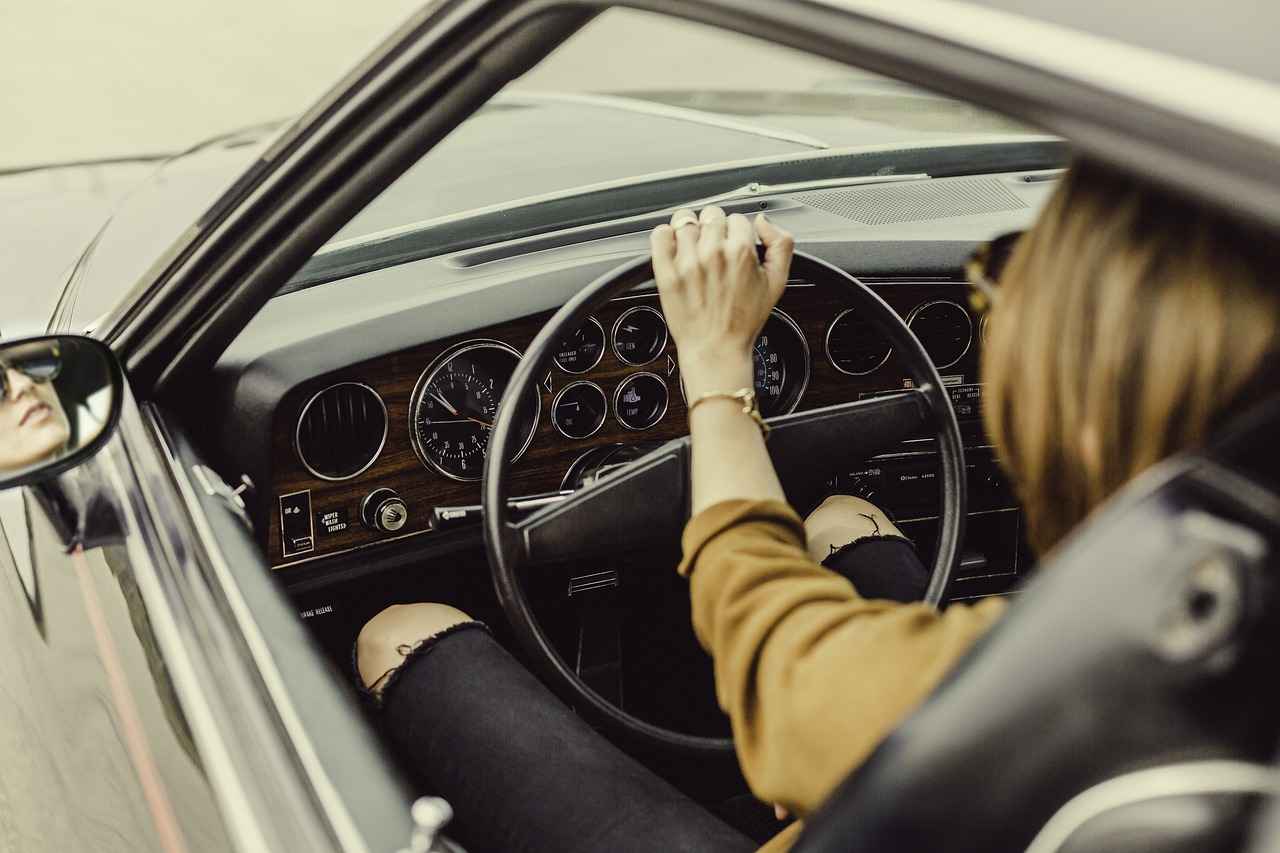
What Factors Influence the Cost to Paint a Car Hood?
When considering the cost of painting a car hood, it is crucial to understand the various elements that can impact the final price. By recognizing these factors, you can make informed decisions that align with your budget and expectations.
- Type of Paint: The choice of paint significantly affects the overall cost. Specialty paints, such as metallic or pearlescent finishes, tend to be more expensive than standard colors. Additionally, high-quality paints often offer better durability and a more professional finish.
- Preparation Work: Proper surface preparation is essential for achieving a long-lasting paint job. If your car hood has dents, scratches, or rust, additional labor may be required to fix these issues before painting. This can increase the labor costs associated with the project.
- Labor Costs: The hourly rates charged by professionals can vary widely based on location and the shop’s reputation. In urban areas, you may find higher rates compared to rural locations. Always compare quotes from multiple shops to ensure you are getting a fair price.
- Size of the Hood: While most car hoods are similar in size, larger vehicles may have more extensive hoods that require additional paint and labor. This can lead to increased costs, especially if you are considering a full repaint.
- Additional Services: Some auto body shops offer packages that include additional services such as clear coating or detailing. While these services can enhance the finish and longevity of the paint, they will also add to the overall cost.
- Location: The geographic location can play a significant role in pricing. Shops in high-demand areas may charge more due to the cost of living and business overheads, whereas smaller towns may offer more competitive pricing.
Understanding these factors can help you budget more effectively for your car hood painting project. Whether you opt for a DIY approach or hire professionals, being informed will ensure that you achieve the best results without overspending.
In summary, when evaluating the cost to paint a car hood, consider the type of paint, preparation work, labor costs, size of the hood, additional services, and your location. By taking these elements into account, you can make a well-informed decision that meets your needs and budget.

DIY vs. Professional Services: Which is More Cost-Effective?
When considering the options for painting your car hood, the choice between DIY painting and hiring professional services can significantly impact both your budget and the quality of the final result. This section explores the advantages and disadvantages of each approach, helping you make an informed decision that aligns with your skills and financial considerations.
- Cost Savings: One of the most appealing aspects of DIY painting is the potential for substantial cost savings. By purchasing the necessary supplies and doing the work yourself, you can avoid labor costs that professionals charge.
- Flexibility: DIY projects allow you to work at your own pace and schedule, making it easier to fit into your personal timeline.
- Skill Development: Taking on a painting project can enhance your skills and provide a sense of accomplishment once completed.
- Quality Control: You have complete control over the materials and techniques used, which can lead to a personalized finish.
- Time-Consuming: DIY painting can be labor-intensive and may require more time than anticipated, especially if you are unfamiliar with the process.
- Quality Risks: Without experience, the quality of the paint job may not meet professional standards, potentially leading to uneven finishes or premature wear.
- Equipment Costs: While DIY can save on labor, the initial investment in quality tools and materials can add up, especially if you need to purchase items you don’t already own.
- Expertise: Hiring professionals ensures that the job is done by individuals with the necessary training and experience, leading to a higher-quality finish.
- Time Efficiency: Professionals can often complete the job more quickly than a DIYer, saving you time and hassle.
- Warranty and Guarantees: Many professional services offer warranties on their work, providing peace of mind that any issues will be addressed post-service.
- Higher Costs: The main drawback of professional services is the cost, which can be significantly higher than doing it yourself.
- Less Control: When hiring professionals, you may have less input in the choice of materials and techniques, which may not align with your vision.
- Scheduling Constraints: You may have to work around the service provider’s schedule, which could delay the project.
In conclusion, the decision between DIY painting and hiring professionals hinges on your budget, skill level, and desired outcome. If you are confident in your abilities and willing to invest time, DIY may be a rewarding option. Conversely, if you prioritize a flawless finish and time efficiency, seeking professional help might be the better choice. Always consider the long-term implications of your decision, including potential costs associated with mistakes or the need for rework.
What Supplies Do You Need for a DIY Car Hood Paint Job?
When embarking on a DIY car hood paint job, having a well-prepared list of necessary supplies is crucial. This not only streamlines the process but also helps you to accurately estimate the costs involved. Below is a detailed list of supplies you will need to successfully complete your project.
- Sandpaper: Various grits (80, 120, 220) are essential for smoothing the surface and removing old paint.
- Masking Tape: Use high-quality masking tape to cover areas that you do not want to paint, ensuring clean lines.
- Drop Cloths: Protect surrounding surfaces from paint overspray with durable drop cloths.
- Primer: A good automotive primer is necessary to ensure proper paint adhesion and to enhance the durability of the paint job.
- Automotive Paint: Choose the right type of paint for your vehicle, whether it’s acrylic, enamel, or urethane, based on your desired finish and durability.
- Clear Coat: A clear coat adds a protective layer and enhances the shine of the paint, making it look professional.
- Paint Sprayer or Spray Cans: Depending on your preference, a paint sprayer can provide a smooth finish, while spray cans are more convenient for smaller jobs.
- Paint Mixing Supplies: If using a sprayer, you may need mixing cups and sticks to prepare your paint.
- Protective Gear: Safety goggles, gloves, and a respirator are essential to protect yourself from fumes and particles during the painting process.
- Polishing Compound: After the paint has dried, a polishing compound can help to achieve a glossy finish.
Having these supplies on hand will not only prepare you for the task at hand but also help you avoid unexpected trips to the store. It’s advisable to conduct a thorough check of your supplies before starting the project. This way, you can ensure that you have everything you need to achieve a professional-looking paint job.
In addition to the supplies listed, consider the cost implications. Each item varies in price, and shopping around can lead to significant savings. For example, purchasing in bulk or opting for generic brands can reduce your overall expenditure. Additionally, keep in mind the potential need for extra supplies if you encounter unforeseen issues during the painting process.
By being well-prepared and informed, you can confidently tackle your DIY car hood paint job, ensuring a successful and satisfying result.
How to Choose the Right Paint for Your Car Hood?
When it comes to painting your car hood, selecting the appropriate paint type is crucial for achieving durability and a professional finish. The right paint not only enhances the aesthetic appeal of your vehicle but also protects it from the elements, ensuring that your investment lasts for years to come. In this section, we will explore various paint options and what factors to consider when making your choice.
There are several types of paint available for automotive applications, each with its own unique properties:
- Acrylic Enamel: This type of paint is known for its high gloss finish and is easy to apply. It dries quickly but may require a clear coat for added protection.
- Acrylic Urethane: Often considered the best option for a durable finish, acrylic urethane provides excellent UV resistance and is less prone to fading.
- Base Coat/Clear Coat: This two-step system involves applying a colored base coat followed by a clear coat. It offers a deep, glossy finish and is highly resistant to scratches.
- Single Stage Paint: This paint combines color and gloss in one application, making it easier to use for DIY projects. However, it may not offer the same level of durability as the base coat/clear coat system.
When selecting paint for your car hood, consider the following factors:
- Durability: Look for paints that offer resistance to chipping, fading, and corrosion.
- Color Matching: Ensure that the paint color matches your vehicle’s original color or choose a new shade that you love.
- Application Method: Some paints require special application techniques or equipment, while others can be applied with basic tools.
- Cost: Higher-quality paints may come with a higher price tag, but they often provide better results and longevity.
To ensure a successful paint job, follow these tips:
- Preparation: Properly clean and sand the surface of the hood to promote paint adhesion.
- Environment: Choose a well-ventilated area with low humidity to avoid issues like dust contamination and uneven drying.
- Layering: Apply multiple thin coats rather than one thick coat to avoid runs and drips.
- Clear Coat: Always finish with a clear coat to protect the color and enhance the shine.
By considering the type of paint and following these guidelines, you can achieve a long-lasting and professional-looking paint job on your car hood. Whether you’re a DIY enthusiast or planning to hire a professional, the right paint choice is essential for a successful outcome.
What Are the Steps Involved in Painting a Car Hood Yourself?
Painting your car hood can be a rewarding DIY project that not only enhances the appearance of your vehicle but also saves you money. However, to achieve a professional-looking finish, it’s crucial to follow a structured process. Below is a comprehensive guide detailing the steps involved in painting a car hood yourself.
Before you begin, ensure you have all the necessary supplies. This includes:
- Sandpaper: Various grits (80, 220, and 400) for surface preparation.
- Masking Tape: To protect areas you don’t want to paint.
- Primer: A quality automotive primer for better paint adhesion.
- Automotive Paint: Choose a color that matches your car.
- Clear Coat: For a glossy finish and added protection.
- Spray Gun or Spray Cans: Depending on your preference and skill level.
- Protective Gear: Gloves, goggles, and a mask to ensure safety.
Proper preparation is key to a successful paint job. Start by washing the hood thoroughly to remove dirt and grime. Once clean, use sandpaper to remove any rust, old paint, or imperfections. Begin with a coarser grit and gradually move to finer grits for a smooth surface. After sanding, wipe the hood with a clean cloth to remove dust.
To prevent overspray, use masking tape to cover areas around the hood, such as the windshield and headlights. Ensure the tape is applied smoothly to avoid paint seeping underneath.
Applying a primer is essential for achieving a good finish. Spray a light coat of primer over the hood and allow it to dry according to the manufacturer’s instructions. Once dry, lightly sand the primer with fine-grit sandpaper to create a smooth base for the paint.
Shake the paint can or prepare your spray gun according to the instructions. Apply the paint in thin, even coats, starting from one side and moving to the other. Maintain a consistent distance from the surface (usually about 6-12 inches) to avoid drips. Allow each coat to dry before applying the next, typically waiting about 20-30 minutes between coats.
Once you achieve the desired color depth, it’s time to apply the clear coat. This step adds shine and protects the paint from UV rays and environmental damage. Similar to the paint application, apply the clear coat in thin, even layers and allow it to dry completely.
After the clear coat has dried, carefully remove the masking tape. Inspect your work for any imperfections or areas that may need touch-ups. If necessary, lightly sand any rough spots and apply additional paint or clear coat as needed.
Allow the paint to cure fully before exposing it to harsh conditions. This can take several days to weeks, depending on the paint used. During this time, avoid washing or waxing the hood to ensure the paint adheres properly.
By following these steps, you can successfully paint your car hood, achieving a professional-looking result while saving on costs. Remember, patience and precision are key to a satisfying outcome.
What Are the Average Costs for Professional Car Hood Painting?
When considering the average costs associated with hiring professionals for car hood painting, it’s essential to gather insights that will aid in effective budgeting. The cost of painting a car hood can vary significantly based on several factors, including the type of paint used, the expertise of the professionals, and the location of the service.
On average, hiring a professional to paint a car hood can range from $300 to $1,000. This price range reflects the quality of materials used and the complexity of the job. Here are some key factors that influence these costs:
- Type of Paint: The choice between standard and premium paint can greatly affect the overall cost. Premium paints not only provide a better finish but also offer enhanced durability.
- Labor Costs: Skilled labor comes at a price. Depending on the region, labor costs can vary, impacting the total expense.
- Condition of the Hood: If the hood requires extensive prep work, such as sanding or rust removal, expect the costs to increase.
- Location: Prices may differ based on geographic location and the local demand for automotive painting services.
To ensure you are getting a fair price, it is advisable to obtain multiple quotes from different auto body shops. This will not only help you compare prices but also give you insight into the services offered.
When seeking quotes, provide detailed information about your vehicle and the specific services you need. This includes:
- The make and model of your car
- The condition of the hood
- Your preferred type of paint
Being clear about your expectations will help professionals give you a more accurate estimate.
While it may be tempting to go for the lowest price, consider the quality of service you are receiving. Look for auto body shops with positive customer reviews and a solid reputation. Check if they offer warranties on their work, which can be an indicator of their confidence in the quality of their services.
While DIY painting might seem like a cost-effective option, the risks involved can lead to additional expenses if not done correctly. Professionals bring experience and skill, ensuring a finish that is often hard to replicate at home. Therefore, weighing the costs against the potential for a high-quality outcome is essential.
In summary, understanding the average costs for professional car hood painting is crucial for effective budgeting. By considering factors such as paint type, labor costs, and the condition of your car, you can make informed decisions that align with your financial plans. Don’t forget to seek multiple quotes and assess the quality of service to ensure you get the best value for your investment.
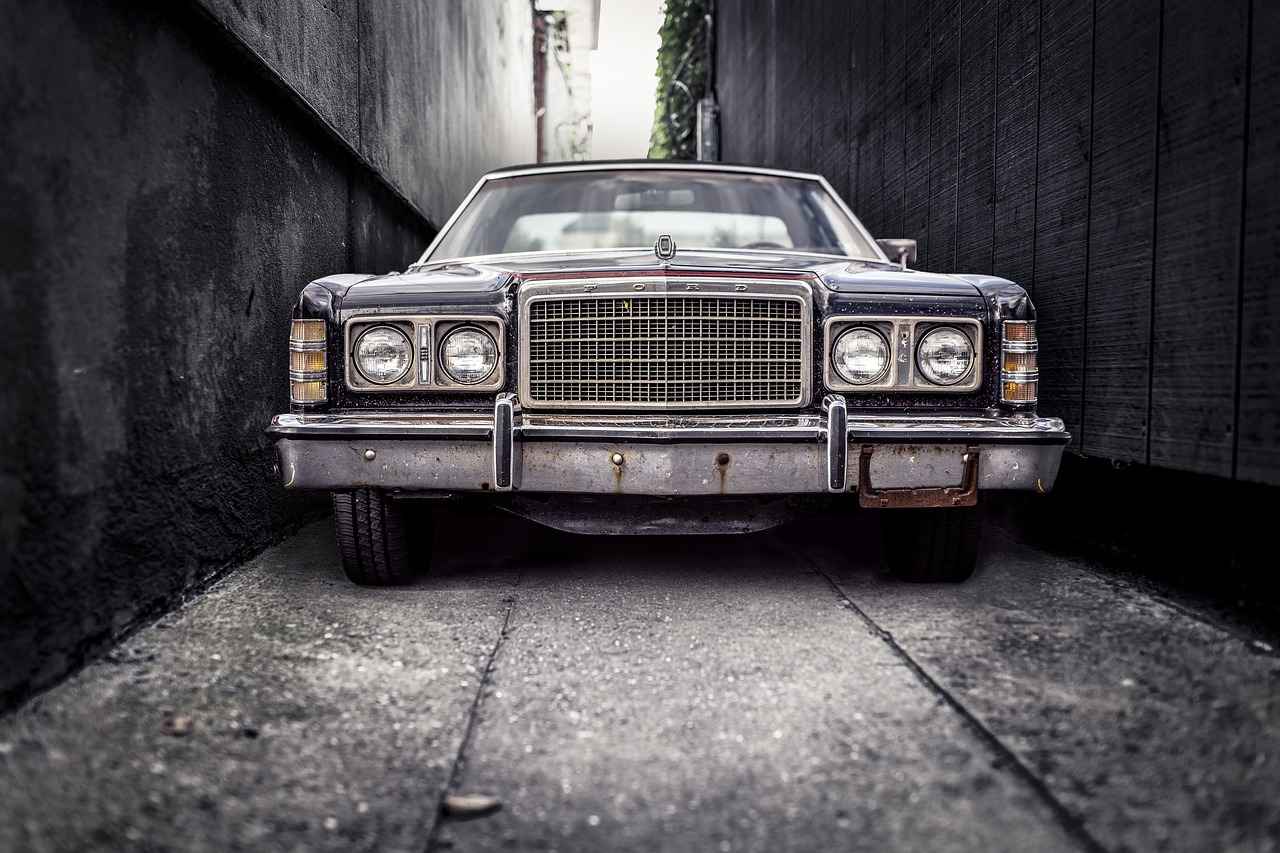
How to Get Quotes from Local Auto Body Shops?
When it comes to getting your car hood painted, obtaining accurate quotes from local auto body shops is a crucial step. This process not only helps you compare prices but also allows you to evaluate the range of services offered, ensuring you make an informed decision that aligns with your budget and needs.
Accurate quotes serve as a foundation for understanding the financial implications of your car hood painting project. By gathering multiple quotes, you can:
- Identify Price Variability: Different shops may offer varying prices based on their location, expertise, and materials used.
- Assess Service Quality: A lower price might not always equate to better value; understanding what each quote includes is key.
- Negotiate Better Deals: With quotes in hand, you can leverage them to negotiate better pricing or additional services.
To ensure you receive comprehensive and comparable quotes, follow these steps:
- Provide Detailed Information: Clearly describe the condition of your car hood, the type of paint you desire, and any specific requirements.
- Ask About Included Services: Inquire whether the quote covers preparation work, paint type, and any post-painting services such as polishing or warranty.
- Visit In-Person: Whenever possible, visit the shops to discuss your needs directly. This can foster better communication and trust.
A well-structured quote should include:
- Labor Costs: The estimated time and rate for labor should be clearly outlined.
- Material Costs: Breakdown of paint and other materials used in the process.
- Timeline: An estimated timeline for the completion of the job.
- Additional Fees: Any potential extra costs, such as for repairs or unexpected issues.
While quotes are essential, customer reviews provide valuable insights into the quality of service you can expect. Look for:
- Overall Satisfaction: High ratings often correlate with quality workmanship and customer care.
- Feedback on Timeliness: Reviews that mention timely completion can indicate reliability.
- Response to Complaints: How a shop handles negative feedback can reveal their commitment to customer satisfaction.
When evaluating auto body shops, consider the following:
- Certifications and Experience: Look for shops with certified technicians and a good track record.
- Warranty Offers: A warranty on their work can provide peace of mind.
- Cleanliness and Professionalism: A well-maintained shop often reflects the quality of work you can expect.
By following these guidelines, you can streamline the process of obtaining quotes from local auto body shops, ensuring you get the best possible deal for your car hood painting project. Remember, investing time in this process can lead to significant savings and a satisfactory outcome.
What Should You Look for in an Auto Body Shop?
Choosing the right auto body shop is a crucial decision for any vehicle owner. The quality of service you receive can significantly impact the longevity and appearance of your vehicle. Therefore, understanding the key factors to consider when selecting an auto body shop is essential for ensuring both customer satisfaction and effective service. Here are several important aspects to keep in mind:
- Reputation: Look for auto body shops with a solid reputation in your community. Online reviews and testimonials can provide insights into the experiences of previous customers. A shop with a high rating is likely to offer better service.
- Certifications: Verify if the shop has necessary certifications from reputable organizations. Certifications indicate that the technicians are trained and skilled in the latest repair techniques and technologies.
- Experience: An auto body shop with years of experience is often more reliable. Experienced technicians are more likely to handle various types of repairs and paint jobs, ensuring a quality outcome.
- Services Offered: Consider the range of services the shop provides. A shop that offers comprehensive services, including collision repair, painting, and detailing, may be more convenient for your needs.
- Estimates and Pricing: Always ask for a detailed estimate before committing. A reputable shop will provide a transparent breakdown of costs, helping you understand what you are paying for. Compare estimates from different shops to find the best value.
- Warranty: Inquire about the warranty on repairs and paint jobs. A good warranty reflects the shop’s confidence in their work and provides peace of mind for customers.
- Customer Service: Pay attention to how you are treated when you first contact the shop. Friendly and knowledgeable staff are often a sign of a customer-oriented business.
- Location and Convenience: Consider the shop’s location and accessibility. A conveniently located shop can save you time and hassle, especially if you need to make multiple visits.
By taking these factors into consideration, you can make an informed decision when selecting an auto body shop. A well-chosen shop not only enhances the appearance of your vehicle but also ensures that you receive quality service that meets your expectations. Remember, investing time in research now can lead to long-term satisfaction and peace of mind.
How Can Customer Reviews Influence Your Choice?
When it comes to selecting an auto body shop, customer reviews play a pivotal role in informing your decision. These reviews provide a window into the experiences of others, highlighting both the strengths and weaknesses of various service providers in your area. By examining these insights, you can gauge the quality of service and the reliability of different shops, ultimately guiding you towards a more informed choice.
Customer reviews are more than just opinions; they are reflections of real experiences. They can reveal important information about:
- Service Quality: High ratings often indicate that a shop delivers satisfactory results.
- Customer Service: Reviews can highlight how well staff interact with clients and handle issues.
- Turnaround Time: Customers frequently comment on how long repairs take, which can be crucial if you need a quick turnaround.
- Pricing Transparency: Honest reviews can shed light on whether a shop provides fair pricing and sticks to estimates.
While reviews can be incredibly helpful, it’s essential to approach them with a critical eye. Here are some tips:
- Look for Patterns: A few negative reviews among many positive ones may not be a dealbreaker, but consistent complaints about the same issue should raise a red flag.
- Check for Recent Feedback: Older reviews may not accurately reflect the current state of the shop. Focus on the most recent comments.
- Consider the Source: Reviews from verified customers are generally more trustworthy than anonymous or unverified ones.
There are several platforms where you can find customer reviews for auto body shops:
- Google Reviews: A widely used platform that offers a broad range of customer feedback.
- Yelp: Known for its extensive reviews on local businesses, including auto body shops.
- Facebook: Many businesses have Facebook pages where customers can leave reviews and ratings.
- Industry-Specific Websites: Websites dedicated to automotive services often feature reviews and ratings specific to auto body shops.
Ultimately, customer reviews can significantly influence your decision-making process. They not only provide insights into what you can expect but also help you feel more confident in your choice. If a shop consistently receives high marks for customer satisfaction and quality of work, it’s likely a safe bet. Conversely, a shop with numerous complaints about service or quality may warrant a second look.
In conclusion, taking the time to examine customer reviews can lead you to a reliable auto body shop that meets your needs. By understanding the importance of these reviews and knowing how to interpret them, you can make a more informed decision that ensures your vehicle receives the best possible care.
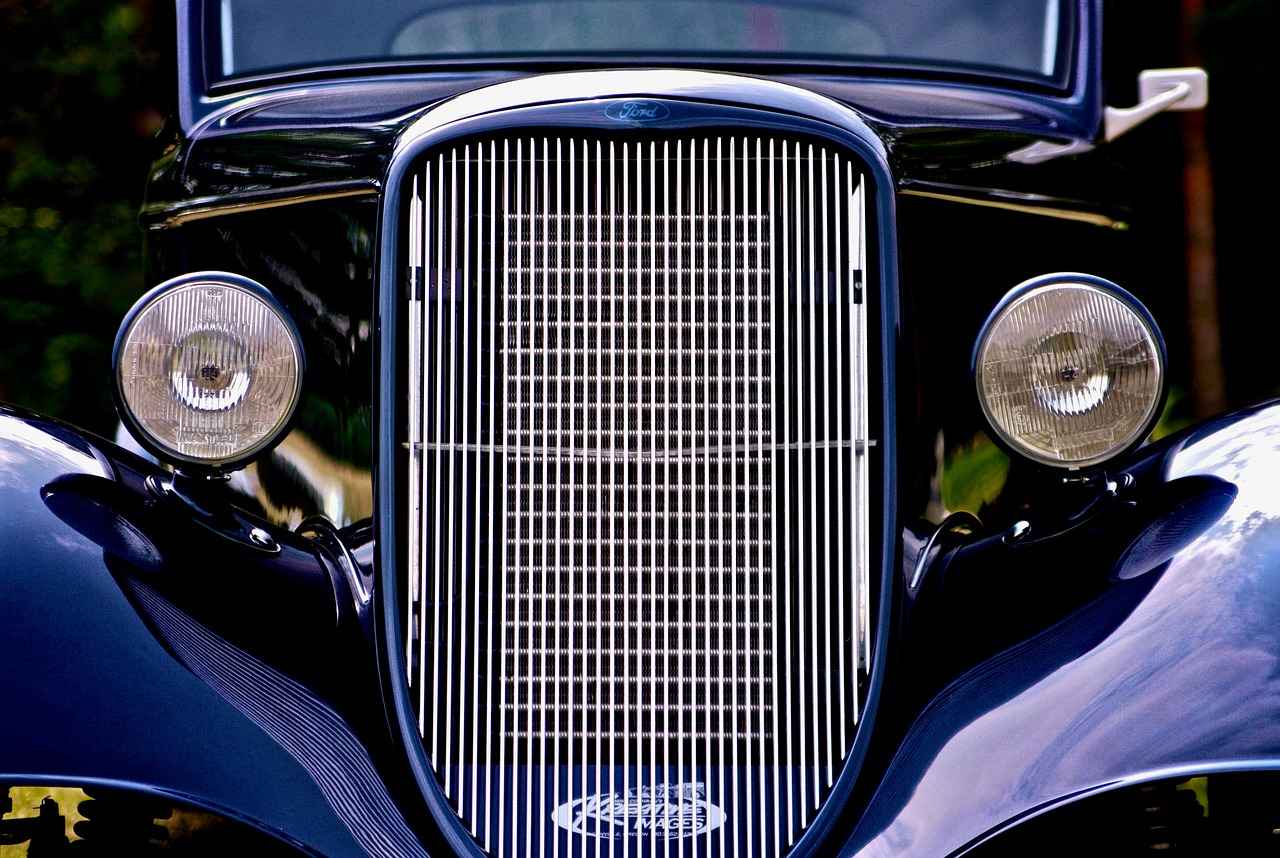
What Are Some Tips for Maintaining Your Newly Painted Car Hood?
When you’ve invested time and money into painting your car hood, it’s crucial to ensure that the finish remains pristine. Proper maintenance after painting your car hood is essential for preserving its appearance and extending the life of the paint job. Below are some valuable tips to help you maintain that fresh look:
Establishing a regular washing and waxing routine is vital. Aim to wash your car at least once every two weeks, using a gentle, pH-balanced car wash soap. This helps remove dirt and contaminants that can damage the paint. After washing, apply a high-quality wax to provide a protective layer against UV rays and environmental elements. Waxing every 3 to 6 months is recommended to maintain the paint’s shine and protect it from fading.
- Using Abrasive Cleaners: Avoid harsh chemicals or abrasive materials that can scratch or dull the paint.
- Neglecting to Dry: Always dry your car after washing to prevent water spots and mineral deposits.
- Parking Under Trees: Tree sap and bird droppings can damage the paint. If possible, park in a garage or use a car cover.
- Ignoring Scratches: Address any scratches or chips immediately to prevent rust and further damage.
Environmental factors such as UV rays, acid rain, and bird droppings can significantly impact the longevity of your car hood’s paint job. Consider applying a ceramic coating for added protection. This advanced solution creates a hydrophobic layer that repels water and contaminants, making it easier to clean while providing superior protection against scratches and UV damage.
Conducting regular inspections of your car hood can help you catch any potential issues early. Look for signs of fading, chipping, or bubbling paint. If you notice any of these problems, consult a professional for advice on how to restore the finish before the damage worsens. Regularly inspecting your car not only helps maintain its aesthetic appeal but also preserves its resale value.
In addition to washing and waxing, consider using a quality car cover when your vehicle is parked for extended periods. This will shield the paint from harmful UV rays, dust, and debris. Furthermore, avoid automatic car washes with brushes that can scratch the paint. Instead, opt for touchless car washes or hand washing methods.
In conclusion, maintaining your newly painted car hood requires a combination of regular cleaning, protective measures, and prompt attention to any issues. By following these tips, you can ensure that your investment remains in top condition for years to come.
How Often Should You Wash and Wax Your Car Hood?
Maintaining the appearance and integrity of your car hood is essential for preserving its value and ensuring a long-lasting finish. One of the most effective ways to achieve this is by establishing a regular washing and waxing routine. This practice not only enhances the shine of your vehicle but also provides a protective barrier against environmental damage.
Regular washing of your car hood helps remove dirt, grime, and contaminants that can accumulate over time. These elements can lead to scratches, dullness, and even rust if left unattended. By washing your car hood at least every two weeks, you can prevent these issues and keep your paint looking fresh.
Waxing your car hood offers several benefits. First and foremost, it creates a protective layer that shields the paint from harmful UV rays, bird droppings, and tree sap. Additionally, waxing enhances the gloss and depth of the paint color, making your vehicle stand out. It is recommended to wax your car hood every three to six months, depending on environmental conditions and exposure.
- Choose the Right Products: Use a pH-balanced car shampoo and high-quality wax to ensure optimal results.
- Wash in the Shade: Washing your car in direct sunlight can cause soap to dry too quickly, leading to streaks.
- Use the Two-Bucket Method: This method helps prevent dirt from being reintroduced to the paint during washing.
- Apply Wax Evenly: Use a foam applicator to apply wax in a thin, even layer for the best results.
Be vigilant for signs that indicate your car hood may need washing or waxing. If you notice a dull finish, water spots, or a rough texture when running your hand over the surface, it’s time to take action. Additionally, if contaminants like tree sap or bird droppings remain on the surface for too long, they can cause permanent damage.
In addition to washing and waxing, consider the following tips to maintain your car hood:
- Park in a Garage or Covered Area: This helps protect your vehicle from the elements.
- Use a Car Cover: If you must park outside, a breathable car cover can offer additional protection.
- Inspect Regularly: Frequent inspections can help you catch any potential issues before they escalate.
By adhering to a regular washing and waxing schedule, you not only maintain the shine of your car hood but also extend the life of the paint, ensuring your vehicle remains in excellent condition for years to come.
What Common Mistakes Should You Avoid Post-Painting?
When it comes to maintaining the appearance of your car hood after a fresh paint job, being aware of common mistakes can significantly protect your investment. Proper care ensures that your car hood remains in excellent condition for years to come. Here are some of the most prevalent mistakes to avoid:
- Neglecting to Wait for the Paint to Cure: After painting, it’s crucial to allow the paint to fully cure before exposing it to harsh conditions. Many people mistakenly wash or wax their car too soon, which can lead to damage or imperfections in the finish.
- Using Harsh Chemicals: Cleaning products that contain strong solvents or abrasives can harm the new paint. Instead, opt for gentle car wash soaps and soft cloths to maintain the integrity of the paint.
- Skipping Regular Maintenance: A common oversight is failing to establish a regular washing and waxing routine. Regular maintenance not only keeps the car looking great but also protects the paint from environmental damage.
- Ignoring Environmental Factors: Parking your car under trees or in direct sunlight can lead to bird droppings, tree sap, and UV damage. Always try to park in a shaded area or use a car cover to shield your investment.
- Overlooking Touch-Ups: Small chips and scratches can occur over time. Ignoring these issues can lead to more significant problems, including rust. Addressing minor imperfections promptly can save you from costly repairs later.
- Not Following the Recommended Drying Time: Each paint type has its specific drying time. Failing to adhere to these guidelines can result in adhesion issues and a compromised finish.
- Using Low-Quality Products: Cutting corners by using cheap waxes or sealants can diminish the longevity of the paint. Invest in quality products that are designed specifically for automotive finishes.
By avoiding these common mistakes, you can ensure that your newly painted car hood stays vibrant and protected. Remember, proper care and attention to detail are key to maintaining the beauty of your vehicle. Investing time in understanding these factors will ultimately lead to a more satisfying ownership experience.
Frequently Asked Questions
- How much does it typically cost to paint a car hood?
The cost to paint a car hood can range anywhere from $100 to $500, depending on factors like the type of paint, the size of the hood, and whether you choose a DIY approach or hire a professional. It’s always a good idea to get multiple quotes!
- What supplies do I need for a DIY car hood paint job?
For a DIY paint job, you’ll need a few essential supplies:
- Sandpaper (various grits)
- Primer
- Automotive paint
- Clear coat
- Masking tape and plastic sheeting
- Paint sprayer or spray cans
This list helps you stay organized and budget correctly!
- How can I maintain my newly painted car hood?
To keep your car hood looking fresh, wash it regularly with mild soap and water, and don’t forget to wax it every few months. This protects the paint from UV rays and environmental damage!
- What common mistakes should I avoid after painting my car hood?
Avoid washing your car for at least two weeks after painting, as the paint needs time to cure. Also, steer clear of abrasive cleaners that can scratch the surface. Treat your new paint job like a fine wine—let it breathe!

